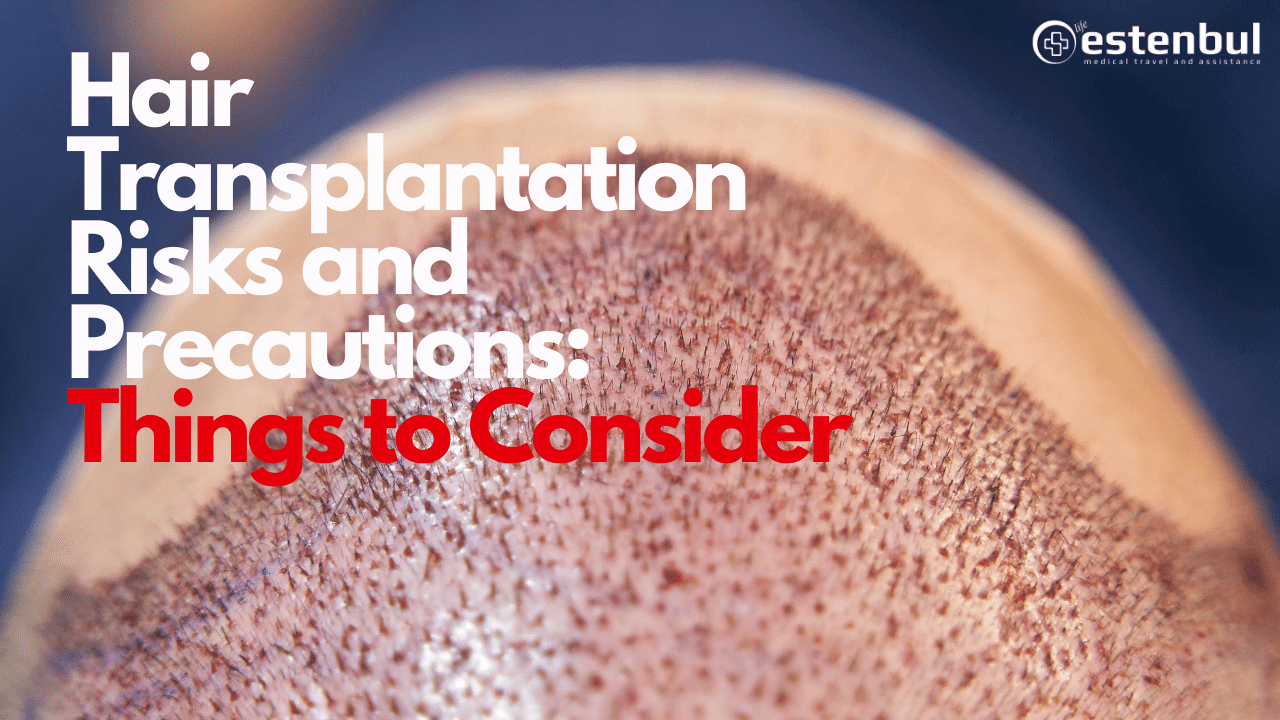
Articles
Hair Transplantation Risks and Precautions: Things to Consider

Hair transplantation is a popular surgical procedure that aims to restore hair growth and achieve natural-looking results. While the procedure is generally successful and has a high satisfaction rate among patients, it is important to be aware of the potential risks and take necessary precautions to minimize them. In this article, we will discuss the risks of hair transplantation and the precautions you should take to ensure a successful and safe procedure.
Risks of hair transplantation: Some of the potential risks of hair transplantation include infection, delayed healing of wounds, low-quality results, and side effects such as pain, swelling, and bruising. In rare cases, the transplanted hair may not take properly or may be rejected by the body. It is also possible to experience itching, redness, color differences, and hair loss after the procedure.
Precautions to take: To minimize the risks of hair transplantation, it is important to choose a qualified and experienced surgeon. Research the surgeon’s credentials and ask for references from previous patients. It is also essential to follow the surgeon’s instructions before and after the procedure to ensure proper healing and minimize the risk of complications. In addition, it is important to have realistic expectations about the results of the procedure and to discuss them with the surgeon beforehand.
In conclusion, while hair transplantation is a safe and effective procedure, it is important to be aware of the potential risks and take necessary precautions to ensure a successful outcome. By following the advice of a qualified surgeon and taking good care of yourself after the procedure, you can minimize the risks and achieve the desired results.
Infection
One of the most serious risks of hair transplantation is the risk of infection. To minimize this risk, it is important to ensure that the surgical environment and equipment are sterile. In addition, following the doctor’s instructions and recommendations after the surgery can help reduce the risk of infection.
Delayed healing of wounds
The cuts made during hair transplantation will naturally heal. However, in some cases, the healing process may not go as expected and scars may remain. To reduce this risk, it is important to pay attention to the experience and references of the doctor performing the procedure. In addition, following the doctor’s recommendations after the surgery will help the wounds heal properly.
Low-quality results
There is a risk of not achieving the expected quality of results after hair transplantation. To reduce this risk, it is important to pay attention to the experience and references of the doctor performing the procedure.
Side effects of the procedure
The side effects of hair transplantation may include pain during the procedure and swelling and bruising after the procedure. These side effects are generally temporary and will disappear within a few days. However, in some cases, these side effects may persist for a long time or reach serious levels. To reduce this risk, it is important to pay attention to the experience and references of the doctor performing the procedure.
Hair not taking properly
During hair transplantation, the aim is to transplant hair from the donor area to the target area. However, sometimes the hair may not take properly. To reduce this risk, it is important to pay attention to the experience and references of the doctor performing the procedure. In addition, a detailed consultation with the doctor before the surgery can help more accurately predict the hair taking process.
Rejection risk
During hair transplantation, the aim is to transplant hair from the donor area to the target area. However, sometimes the body may reject the transplanted hair and the procedure may not be successful. To reduce this risk, it is important to pay attention to the experience and references of the doctor performing the procedure. In addition, a detailed consultation with the doctor before the surgery can help more accurately predict the rejection risk.
Itching and redness after the procedure
It is normal to experience itching and redness after hair transplantation and these effects usually disappear within a temporary period of time. However, in some cases, this reaction can reach serious levels and persist for a long time. To reduce this risk, it is important to pay attention to the experience and references of the doctor performing the procedure.
Color differences after the procedure
It is possible to experience color differences in the hair after hair transplantation. To reduce this risk, it is important to pay attention to the experience and references of the doctor performing the procedure. In addition, a detailed consultation with the doctor before the surgery can help prevent color differences.
Hair loss after the procedure
It is possible to experience hair loss after hair transplantation. To reduce this risk, it is important to pay attention to the experience and references of the doctor performing the procedure. In addition, a detailed consultation with the doctor before the surgery can help prevent hair loss.
In addition to these risks, there are also other potential risks of hair transplantation. Therefore, if you are considering hair transplantation, it is important to carefully consider the potential risks of this procedure and the measures that can be taken to reduce these risks.

